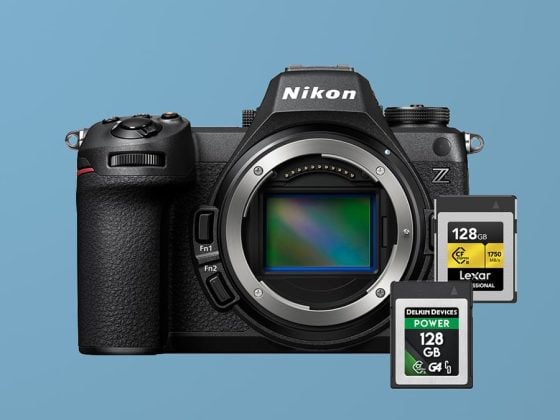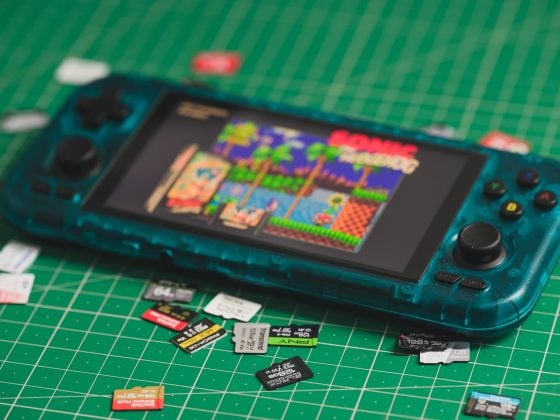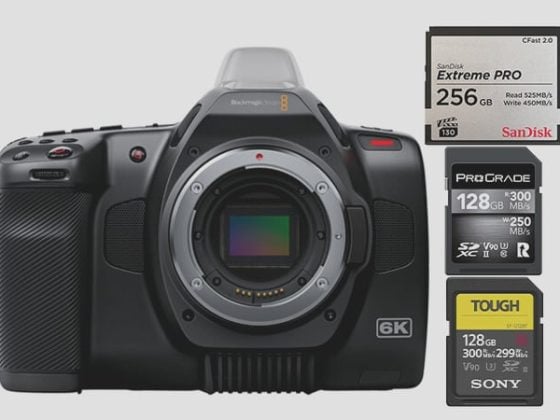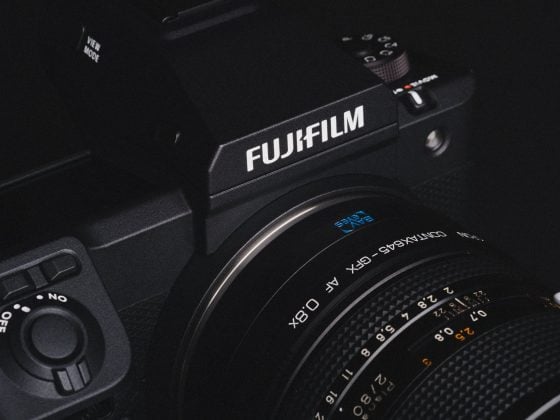Best Memory Cards For The Fujifilm X-T1
Fujifilm X-T1 is one of the original cameras that can take advantage of the UHS-II memory cards. I’ve ordered several of the most popular UHS-II memory cards and have included them in the Fuji X-T1 memory card speed test.
The results are impressive, but not all the UHS-II memory cards will outperform regular UHS-I cards so use this chart to guide you when making a purchase decision.

Fuji XT-T Memory Card Speed Tests
The USB 3.0 read/write test is done with the SD card slot in the MacBook Pro. The UHS-II USB 3.0 speeds are done with a UHS-II card reader. This is the control. The third speed listed is the Fuji X-T1 real-world write speed test.
These tests were done by shooting a burst of RAW images for a dedicated amount of time. The video was recorded with another camera to capture the time it took to clear the buffer, and then the total amount of bytes captured per run was calculated against the time. An average of three runs per card were done. Plus a test using RAW+JPEG and JPEG.
I’ve posted the RAW speeds.
| SD Memory Cards | USB 3.0 Read | USB 3.0 Write | Fuji X-T1 Write Speeds |
| UHS-II | |||
| Lexar 32GB 2000x UHS-II | 280.9 MB/s | 181.4 MB/s | 83.91 MB/s |
| Delkin 32GB UHS-II | 245.1 MB/s | 164.6 MB/s | 79.87 MB/s |
| Sandisk Extreme Pro 32GB UHS-II | 257.3 MB/s | 109.9 MB/s | 75.75 MB/s |
| Lexar 32GB 1000x UHS-II | 145.0 MB/s | 60.7 MB/s | 52.22 MB/s |
| UHS-I | |||
| Sandisk Extreme Pro 64GB SDXC Class 10 / U3 | 89.0 MB/s | 84.7 MB/s | 58.12 MB/s |
| Kingston 64GB SDXC Class 10 / U3 | 88.1 MB/s | 74.3 MB/s | 56.33 MB/s |
| Sony 64GB SDXC Class 10 / U3 | 87.2 MB/s | 71.9 MB/s | 54.95 MB/s |
| Samsung Pro 64GB SDXC Class 10 / U1 | 86.8 MB/s | 77.2 MB/s | 54.46 MB/s |
| Sandisk Extreme Plus 64GB SDXC Class 10 / U3 | 88.9 MB/s | 62.0 MB/s | 47.16 MB/s |
| Transcend 64GB SDXC Class 10 / U3 | 87.7 MB/s | 64.1 MB/s | 47.05 MB/s |
| PNY 64GB SDXC Class 10 / U1 | 86.1 MB/s | 54.5 MB/s | 46.10 MB/s |
| Lexar 600x 64GB SDXC Class 10 / U1 | 85.6 MB/s | 60.1 MB/s | 45.29 MB/s |
| Sandisk Extreme 64GB SDXC Class 10 U/3 | 71.3 MB/s | 52.1 MB/s | 41.32 MB/s |
Conclusions From The Test
Expect the 32GB and 128GB versions of the cards listed above to perform about the same. These results can also vary from card to card so your results could be slightly different than mine. So follow this as a general guide.
The UHS-II cards perform significantly faster except for the Lexar 1000x. It seemed to perform slower than even some UHS-I cards. I think it could possibly be a card from a bad production run if such a thing exists.
Of the UHS-I cards, the Sandisk Extreme Pro Class 10 / U3 cards are the fastest. The Kingston comes in second. Although the Kingston performed slowly on the Fuji X100T.
-I’m starting to notice sometimes cards will give me slower speeds at random times. If I take the card out and insert it again the speed will improve. This tells me that oftentimes the contacts can get dirty or there simply isn’t a great connection. However, this wasn’t the case with the Lexar 1000x. It’s just a slow card.
JPEG-only write speeds were at around 20-21MB/s no matter what card I used. I might be able to get that faster a little if I turned noise reduction to -2 but I’m not entirely sure how all that affects speed.
Shooting RAW+JPEG only slows down write speeds of about 3-5 MB/s.
Best SD Memory Card Deals
These are really great cards for the price, they also perform pretty well with the Fuji XT-1.
Sony 64GB SDXC UHS-I Class 10 / U3 – (Amazon)
Samsung Pro 64GB SDXC UHS-I Class 10 / U1 – (Amazon)
PNY 64GB Elite Performance UHS-I SDXC Class 10 / U1– (Amazon) (Adorama)
Transcend 64GB UHS-I SDXC Class 10 / U3 – (Amazon) (Adorama)
The Top Performing Memory Cards
These are the best-performing memory cards based on my test.
Lexar 32GB 2000x UHS-II – (Amazon)
Lexar 64GB 2000x UHS-II – (Amazon)
Delkin 32GB UHS-II – (Amazon)
Sandisk 32GB Extreme Pro UHS-II – (Amazon)
Sandisk 64GB Extreme Pro UHS-II – (Amazon)
USB 3.0 USH-II Memory Card Reader
You’ll need a USB 3.0 UHS-II memory card reader to go with your card. See the fastest UHS-II card reader.
Do You Need A UHS-II Card For The Fuji X-T1?
Based on the results and my experience using this camera I really don’t think it’s absolutely necessary to use a UHS-II for the Fuji X-T1, but it does help.
For sure I would get the fastest card you can afford because when shooting something like HDR bracketed, or RAW+JPEG it does take some time for the buffer to clear between bursts and this can get in the way of getting the perfect shot. This happened to me on the beach once when I use using a card that came in a bundle with the camera. It was really annoying.
If you don’t shoot bracketed or burst then it’s less of an issue and your average decently fast card like Samsung or PNY will be fine.
If you only shoot JPEG then speed won’t matter as much since each file is usually only 4-7 megabytes.
The only downside I see to UHS-II is they do get extremely hot. When doing these speed tests in my MacBook Pro they would get very hot to touch. But I’ve yet to have my camera overheat because of this.
Do You Think You Need A Fast Card?
The Fuji X-T1 has a small memory buffer of about 100MB-200MB and the RAW or RAF files are about 33.5MB each. You’ll only be able to burst 7 or 8 shots before filling the buffer. Then clearing your buffer is going to be all about memory card write speeds. JPEG files are about 4-7MB each.
If you like to shoot in burst mode or bracket HDR photos, then I think you will be better off with a faster card. Use your judgment on whether you should get a UHS-I card or a UHS-II card. Some UHS-II cards perform almost twice as fast as some of the UHS-I cards while only costing a little bit more.
As far as size goes I rarely fill up 32GB cards in a single day but it does happen, so I’ve been buying 64GB cards just to be safe.
Speed Class 1 vs. Class 3
You’ll see a U with a little number in it on each card, either a 1 or a 3. This stands for the UHS speed class and has to do with minimum write speeds. This is different than UHS-I and UHS-II.
A Class 1 or U1 card has a minimum write speed of 10MB/s
A Class 3 or U3 card has a minimum write speed of 30MB/s
Minimum write speeds just means that when a memory card is near full or fragmented it will still perform at it’s minimum class speed. This doesn’t mean that a Class 1 can’t write at 30MB/s, it just means a Class 3 is guaranteed to write at 30MB/s always.
On older cards, you’ll see a circle or a C with a number in them. These numbers also represent minimum speeds.
Class 2 – Minimum write speed 2MB/s
Class 4 – Minimum write speed 4MB/s – Fuji X10, X-Pro1, X-E1, X100, XF1, XS1
Class 6 – Minimum write speed 6MB/s
Class 10 – Minimum write speed 10MB/s – Fuji X-E2, X30, X20, X100s, X100T, X-T1, XQ1, XA1, XM1
SDXC Cards – Why They Are Important
SDXC and SDHC have to do with the host control that handles memory storage. The SDHC has now been replaced by SDXC. SDHC had a FAT32 file structure which is 32bit.
Now SDXC has a mandatory exFAT file system that is 64bit.
The file system is important when using new video codecs like Sony’s XAVC. Many of the newer Sony cameras require an exFat SDXC card to shoot XAVC video. This is why from now on I try to only buy SDXC or 64GB cards.
Check out all the available lenses for the Fuji X-T1
| **This website contains affiliate links. We will earn a small commission on purchases made through these links. Some of the links used in these articles will direct you to Amazon. As an Amazon Associate, I earn from qualifying purchases. |




